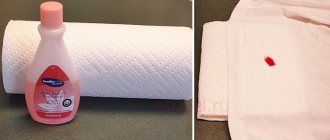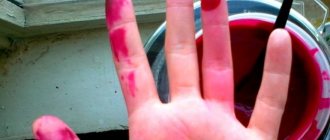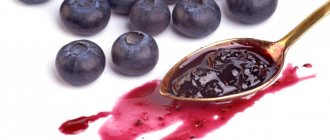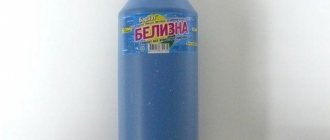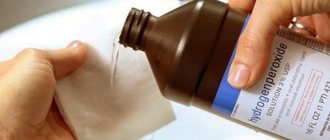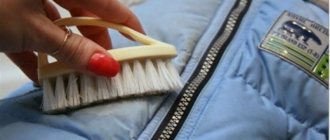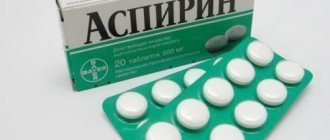If you are lucky enough to get an oil stain on your favorite clothes, this is not at all a reason to part with them. It’s enough to get acquainted with different ways to remove oil from clothes. Among them there are professional and folk or home remedies that are always at hand, but not everyone knows how to use them. Oil stains are really easy to remove, even if they have become thoroughly embedded in the fibers. Today we’ll talk about how to remove them from various types of fabrics, including wool.
General information, or is the game worth the candle?
Before you start studying methods for removing stains, it would be good to decide for yourself how relevant this is. If the thing is new and good, then, of course, you need to make every effort. Otherwise, leave it for gardening work.
Another criterion is the characteristics of the fabric or product. It affects the choice of funds and the time that will have to be spent.
How to remove from machine?
Machine oil is one of the most challenging pollutants. You can use special means and folk methods to remove it from clothes.
Folk recipes
The choice of recipe should take into account how severely damaged the fabric is and how long ago the stain was set. Simple formulations may not be able to cope with old machine oil stains .
Ammonia
Ammonia is used as a solvent diluted with water. For this purpose, take the same amount of each component. The solution is applied generously, and after an hour and a half the item is washed. Ammonia has an unpleasant odor, so it is best to carry out all work with it with the windows open.
Refined gasoline
Kerosene and refined gasoline can be used as solvents to remove engine oil stains.
The product can be used either in its pure form or with the addition of liquid soap or dish gel. Exposure time is up to one and a half hours. After this, the item is washed.
Acetone
Acetone or a product containing it can be used as a solvent. In this case, you should choose solutions without a pronounced tint, so as not to accidentally stain the item and not aggravate the situation.
Acetone is applied to the stain, going slightly beyond it . The item is left to sit for the solvent to take effect. After this, rinse the product and wash it.
Special preparations
To remove stains from technical oils, special stain cleaners and targeted solvents can be used. These can be both household chemicals and car cosmetics that are intended for treating the car interior. The disadvantage of most of these drugs is their high cost.
Dr. Beckmann
Products are produced under the Dr. Beckmann TM, each of which is intended for a specific type of stain . This makes them effective when used strictly for their intended purpose. Stain remover for machine oil, grease and bitumen allows you to cope even with old stains.
In some cases, re-processing will be required. Price for 50 ml is about 200 rubles.
Liqui Moly Auto-Innenraum-Reinger
The car interior cleaner contains components for dissolving and removing machine oil stains. The drug can be used to remove stains from textile items of clothing . Price – up to 1,000 rubles.
Main types of stains
An oil stain is too general a definition. In fact, there are quite a few types of oils, each of which has its own characteristics. For convenience, we can distinguish two large groups:
- household,
- technical.
Household oils
This includes sunflower, cottonseed, soybean, corn and the like. They are further divided into several subgroups:
- non-drying - castor;
- drying for a long time - cotton, olive, rapeseed;
- drying out but leaving a sticky film - sunflower, corn;
- completely dry - pumpkin, flaxseed.
It is easiest to deal with oil that dries slowly and does not form a film on the surface.
Technical
Automotive and industrial oils include: synthetic oil, mineral, diesel, transmission, lubricating and cooling oils, etc.
At home, you can deal with any of the above contaminations if you apply enough diligence.
Lemon juice
This is one of the best natural solutions for removing oil stains from clothes. Citric acid is one of the best active ingredients for removing grease.
How to use it
- Squeeze the juice of fresh lemon and rub it into the stain.
- Leave for 10 minutes and then soak the clothes in warm water. Add detergent and wash regularly.
Make your life easier and use these natural techniques to remove oil and grease stains from your clothes from now on. Try the ingredient that impresses you the most.
First stage of cleaning
After drying the stain, experienced housewives advise not to rush into washing, but to first use one of the adsorbent substances:
- Salt. Apply a thick layer and shake off after a couple of minutes.
- Starch. The fabric is soaked through, so it is better to cover the stain with a substance. Pour starch into a saucer, place a dirty piece of cloth on it and cover it with a good layer of powder on top. Press and leave for 3 hours.
- Talc. A good product to combat fresh stains. To do this, pour a layer of talcum powder over the stain, lay blotting paper on top and iron it with a warm, not hot iron. After this, leave it for 12 hours.
- Chalk or its analogues (for example, tooth powder). Grind to flour, cover the contaminated area, cover with a napkin and place a weight. Leave it overnight and then scrub the stain with a brush.
Adsorbents can absorb fine oily splashes without leaving any residue. But you shouldn’t put on clothes right away - you need to wash the item in the usual way to remove any remaining adsorbent. If we are talking about outerwear, then the remaining pollutants are removed with a soft rag, after which the product is dried on hangers, avoiding exposure to sunlight.
Cleaning leather clothes
To remove oily stains from leather items that cannot be washed, use the following techniques.
- Wipe the stain with a cut onion.
- Treat the contaminated area with a cloth soaked in lemon juice.
- A paste of starch diluted in water is placed on the stain, and then wiped with gasoline using a cotton swab.
- Use soda diluted until completely dissolved in water 1:10. Soak cotton wool in the solution and treat the stain.
- Remove oil marks from leather items with alcohol or vodka.
- Wipes are suitable for cleaning TV and computer screens.
If necessary, use one of them.
Second stage of cleaning
To completely remove a medium or large greasy stain, you will need to perform a final cleaning with one of the following products:
- Petrol. For convenience, mix a teaspoon of gasoline with a spoonful of starch. Spread the paste over the stain and leave until completely dry. After this, use a brush to remove all particles and place the product in the wash.
- Laundry soap . Vegetable oil can be easily neutralized if you immediately cover it generously with laundry soap foam. After 20 minutes, transfer the product to a basin and add warm water. Leave it overnight. You can add a little sugar after rubbing with laundry soap.
- Kerosene . Soak a cotton swab in it and wipe away any oil stains. Kerosene cannot be washed off with plain water, but it does not mix well with laundry soap.
- Mustard. The main thing here is to act on time. Sprinkle fresh oil spills generously with spice powder. After 30 minutes, slightly moisten the fabric and add foam from laundry soap. After another 20 minutes, start your normal wash.
- Ammonia. Sea buckthorn oil can be easily washed off if you pour ammonia on it and leave for 40 minutes.
- Turpentine is another reliable way to get rid of orange stains from sea buckthorn. Make a mixture of turpentine and ammonia or add potato starch to it.
Life hack To enhance the effect of all sorbents, an iron is used with great success. Place any cloth or paper towel under the stain, blotting paper on top and iron at medium temperature. The paper is changed as oil appears on it.
The most difficult thing is with drying oils. In this case, a hard film forms on the blots, which is extremely difficult to dissolve.
Causes of grease stains
Unsightly oil stains appear on clothes for various reasons:
- due to carelessness at the table during a meal, a piece of fatty food or sauce containing oil ends up on clothes;
- during cooking, splashes of hot fat fall on the stove, dishes and cook’s clothes;
- oil stains appear on skirts and trousers if you accidentally sit on a chair stained with grease;
- No car repair is complete without oil stains.
Having discovered contamination, they try to eliminate it immediately using suitable household products.
Fighting vegetable oil stains
Most often, minor troubles happen when you are cooking in the kitchen, frying, or just eating a salad. Popular masks with coconut oil also sometimes pose a difficult task for housewives.
How to remove a stain from sunflower, corn or coconut oil:
- Remove excess oil with a paper towel. Use plain white, otherwise you risk transferring the dye to your clothes.
- Cover the stain with baking soda. You can use cornstarch.
- Leave for 30-60 minutes, then scrub the stain with an old toothbrush.
- Pour some liquid soap and lather it.
- Machine wash following label instructions. Hot water helps dissolve fat, but not all products can withstand high temperatures.
- Add 200ml white vinegar to the drum. This will make washing more efficient.
- Make sure the result is achieved before drying and ironing the item.
What to do first?
Like most types of stains, oily grease stains can be removed much easier if you tackle them right away.
The area of fabric on which oil has gotten must be rubbed with soda, talcum powder or chalk . Even tooth powder will do.
These products have a high absorbency, due to which they absorb some of the oil spilled on the fabric. Apply the powder with light rubbing movements. Also, to prevent the stain from spreading over an even larger area of the material, you can walk along its perimeter with a wet sponge.
After the fat is absorbed into the powder, it is crushed . Usually it is enough to wait 15-20 minutes. And then you can move on to removing the traces of oil.
This video will show you how to remove a greasy stain from clothes:
Fighting animal stains
It can be butter or beef fat; no one is safe from the fact that herring oil will not get on your clothes while you are removing the bones. You can get rid of such stains, but the fight should begin immediately:
- Dish gel. It is slightly diluted with water, after which the solution is soaked into the stain.
- White spirit or acetone. You can use nail polish remover. Apply generously to the stain and leave for 20 minutes. Not suitable for synthetics!
- If butter gets on the upholstery of the sofa, you should cover it with a thick layer of baking soda, then wipe it with a rag soaked in stain remover.
Removing engine oil
Clothes also become contaminated with technical oil. Here's how to get rid of such stains.
- To wash away traces of fresh machine oil, starch is diluted in hot water to a paste-like state. Leave on the dirt for about an hour, then wipe with a dry cloth.
- Thick fabrics can be washed away from oil if the stains are first wiped with car shampoo diluted in water. Leave the solution on the stain until the stain disappears.
- Before washing off the machine oil that has not had time to be absorbed into the fibers, check the stocks of automotive special products. Sprays and pencils aimed at cleaning from various contaminants will help.
If there are no special products, you can sprinkle mustard powder on the stain. Then soak a toothbrush in water and lather it generously with laundry soap. Periodically wetting the stain, wipe it with the resulting mixture of soap and mustard. Rinse off the remains with heated water.
There are often cases when, while in the garage, men washed off prints of machine oil with gasoline or kerosene.
What else can you do to remove oil stains from clothes? Industrial solvent WD-40 removes almost any contaminant. But be sure to check the effect of this aggressive composition on an inconspicuous area of the product.
Fighting stains from technical oils
Depending on the type of fabric:
- To remove stains from velvet , use sifted sand. The stain is first moistened with gasoline using a cotton swab. Then the treated area is tapped with a bag of sand. When the dirt is absorbed, start washing.
- Cotton fabric is cleaned with alcohol. At 3 tbsp. l. add 1 tsp. ammonia and 0.5 tsp. gasoline. After soaking the stain, leave it for an hour before washing.
- For woolen fabric, glycerin with ammonia is used. Combine them in equal proportions, distribute them over the stain and start washing after an hour.
- Silk fabric will be saved by a solution of 9% vinegar in a 1:1 ratio. This technique will allow you to safely tidy up colored fabric, refreshing its shades.
- Denim . Toothpaste or laundry soap copes well with this task. Rub the denim with one or the other and leave for 30 minutes.
- Knitwear. Remove fresh stains with laundry soap and sugar. Old ones - with gasoline.
- Suede leather. To clean this capricious material, mix ammonia and liquid soap in equal proportions. Apply to the stain with a soft cloth and leave until dry, then clean with a soft toothbrush.
How to remove fresh oil stains from clothes
Oil stains on clothes are a problem faced by all housewives without exception. The causes of stains on pants, sweaters and shirts are:
- hot oil splashing while cooking;
- car repair or engine oil change;
- accidental ingestion of oil when eating fatty foods.
Greasy marks cannot be removed with regular powder, so many people give up on stained items.
But if you recently got a stain, you can still fight for your clothes. Before you begin cleaning, you must:
- blot off excess oil with paper napkins;
- shake the item to remove dust;
- Place a cotton cloth under the stain.
In order not to spoil the item, apply the selected product to an inconspicuous part. If the dye does not wash out and the fabric fibers are not damaged, the powder or solution can be applied to the stain. In order not to increase its area, when using a brush, move from the periphery to the center of the contamination.
When removing oil stains, it is better to clean from the reverse side of the product, especially if you use a brush or sponge.
Salt
To get rid of oil stains on light-colored clothes, use table salt. It corrodes fatty substances of animal, mineral and vegetable origin, due to which the fibers are cleaned of dirt.
Features of cleaning clothes with salt:
- sprinkle the stain with table salt;
- Use a soft sponge to press the product into the fabric;
- leave for a quarter of an hour;
- The remaining salt is shaken off.
If marks still remain on the clothes, soak them in saline solution:
- dissolve 4 tbsp in 3 liters of hot water. l. salt;
- soak the thing;
- after 40 minutes, rinse in clean water.
To consolidate the result, start a machine wash with powder at temperatures up to 70°C. If a stain appears on cotton fabric, use liquid gels or powders, but in combination with stain removers.
Laundry soap
Regular laundry soap is a gentle product for removing stubborn stains. It contains fatty acids and alkalis. Does not cause allergies, therefore suitable for washing children's clothes.
How to remove an oil stain on clothes with laundry soap:
- Place cellophane under the stain so that the oil does not bleed onto other parts of the clothing;
- the contamination is moistened with warm water;
- the top is treated with laundry soap;
- leave for 8-10 hours;
- Machine washable with regular powder at 55-60°C.
For large stains, it is recommended to soak things in a soapy solution:
- 5 tbsp. l. soap shavings are dissolved in 1.5 liters of hot water;
- soak clothes in a solution cooled to 50°C for 3 hours;
- Wash with your hands and rinse in clean water at least 2-3 times.
Due to the high alkalinity of the soap solution (pH 11-12), it is used as both a stain remover and an antibacterial agent.
Chalk, tooth powder or talc
Powder absorbents are products that easily remove fresh greasy marks on clothes. Talc, chalk or tooth powder are most often used for cleaning.
1 cleaning method:
- an absorbent is applied to the contaminated area of clothing;
- gently rub with a soft sponge;
- after 3 hours, remove the residue with a brush;
- Machine washable with gel powder at 60°C.
2nd cleaning method:
- absorbent is poured onto the stain in a thick layer;
- 2-3 cloth napkins are placed on top;
- pressed down with a weight (dumbbells, a stack of books, a bottle of water);
- after half a day, remove the powder;
- Machine washable using gel conditioner.
Most often, absorbent powders are used to remove stains on knitted items. If traces of oil do not disappear, repeat the procedure 2-3 more times.
Dish detergent
Dishwashing detergent contains surfactants and fat-dissolving additives, so it is ideal for removing oil stains on clothes. Before the procedure, it is recommended to remove excess fat with a paper towel.
Removing stains with detergent:
- Thick gel is applied to the contamination;
- rub with fingers;
- leave for 20 minutes;
- wash in warm water.
If the clothes are not afraid of hot water, pour boiling water over the stains and only then apply the gel. To clean items, it is recommended to use detergents with minimal dye content.
Bleach
For stains on white clothes, bleaches in the form of a gel, solution, soap or pencil are effective. To prevent damage to fibers, use products based on non-ionic surfactants.
Features of removing oil traces:
- stains on clothes are moistened with warm water;
- treated with bleach;
- rub in with a soft sponge or brush;
- After half an hour, wash it in a soapy solution.
To remove mineral oils, it is recommended to use oxygen bleaches - Bos Plus Oxi, Persol Extra Oxy Power Fresh, Parus Bio.
Turpentine
Stubborn grease stains on clothes can be easily removed with turpentine. In everyday life, it is used to remove old paint or varnish, so it copes with oil stains 100%.
How to clean clothes with turpentine:
- Apply a little glycerin to the spot;
- after half an hour, wash off with water;
- mix turpentine with ammonia solution in equal proportions;
- moisten a cotton pad and treat stains;
- After 3 hours, start washing with powder and conditioner.
Ammonia solution is toxic, so perform the procedure in a ventilated area.
If the spots do not disappear the first time, use a solution of boiled water, ammonia and glycerin. If the clothes are not wool, wash them in a machine at a temperature of 60°C.
Starch
To remove fresh oil stains from clothes, it is recommended to use potato starch. It draws out residual fat from the fabric, which increases the chances of removing stains during machine washing by 70%.
How to remove starch contamination:
- Powder is applied to the clothes on the reverse side;
- rub in with a sponge or soft-bristled brush;
- after 15 minutes, shake off the starch;
- soak the item in soapy water;
- After half an hour, start the machine wash.
Before soaking, remove all starch from the fibers, otherwise the fabric will become dull after washing. If oil stains remain, use a stain remover or bleach.
Iron
The iron itself does not combat oil stains on clothes. But by increasing the temperature, it increases the fluidity of the oil, so it is easily removed from the textile fibers.
Removing traces of grease with an iron:
- place thick paper under the stain;
- paper napkins are placed on top;
- place a heated iron on the dirt;
- napkins are changed periodically;
- The procedure is repeated until the paper stops getting dirty.
This method of treatment is not suitable for dealing with stains on fabrics that shrink. Therefore, an iron is not used when cleaning clothes made of natural wool and viscose.
Professional products
If the actions are not successful, then you should resort to the help of specialized products for removing grease stains. Some of them were originally intended for other purposes, but do an excellent job with this task:
- Plumbing cleaning products - Sanita and many others. Be careful not to ruin the fabric: test on an inconspicuous area first. This method is not suitable for delicate fabrics.
- Bleaches. “Sorbent”, “Original”, “Antipyatin”. Inexpensive and effective means.
Now you can face oil stains head on. The listed means and methods for removing complex contaminants are enough for all occasions. Of course, the sooner you notice the stain, the higher the chances of removing it completely, without any residue.
Common mistakes
From the proposed arsenal of means suitable for removing contaminants from oil, one should resort to the use of gasoline, kerosene, and turpentine in extreme situations. This is due to the pungent, difficult-to-remove odor that permeates the processed products.
Do not place things with traces of oil on a hot radiator to dry, for example, after rain. When heated, contamination quickly penetrates the fibers, and it becomes almost impossible to remove it.
Having information about a variety of ways to remove oil stains from clothes, you can quickly navigate and choose the most suitable product.
Preparation
For most women, a drop of fat that gets on their outfit causes genuine horror. And all because experienced housewives know that removing contamination is not so easy, and you will have to work hard.
This happens because the fat penetrates the fiber structure and, when solidified, is securely bonded to the base.
Hence the conclusion that fresh stains come off best. Therefore, the problem must be eliminated as soon as possible. Success is almost guaranteed if you take action in the first three hours.
Don’t think that adding more washing time and adding more powder will help remove the stain. On the contrary, fat will only become more firmly entrenched in the tissue and will be difficult to remove. Therefore, you cannot wash dirty clothes without pre-treatment.
Also keep in mind that different types of materials use different methods for removing dirt.
A few words about the withdrawal procedure.
Firstly , any product must first be applied to a clean surface around the stain, and then treat the shiny mark, moving from the edges of the mark to the center. This will prevent the “spreading” of contamination.
Secondly , before cleaning, it is advisable to shake off dust from the product and remove dry dirt with a brush.
Thirdly , before application, any product should be tested from the reverse side in a hidden area. And only if the material has not reacted in any way can the composition be used.
Fourthly , after the manipulations, the outfit must be rinsed by hand, and then it can be washed in a machine. This rule is especially true for solvents and strong-smelling substances.
Stain removers for oil stains on clothes
Contamination can be removed using special means. When purchasing, you should choose them according to the type and color of fabric.
The following medications will help remove oil and grease:
- "Antipyatin";
- "Vanish";
- "Sorbent";
- "Agidel";
- "Just a minute."
Initially, you need to slightly wet the problem area. Then apply the selected product to it. Maintain the time specified in the annotation. Load the product into the washing machine. In addition to washing powder, pour stain remover into the compartment and run the normal washing cycle. When finished, rinse further.

